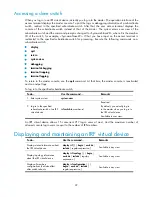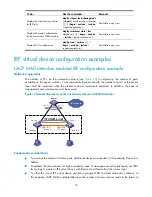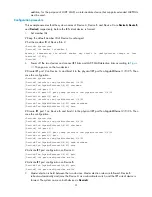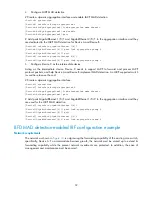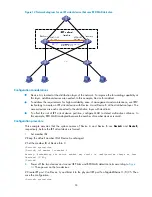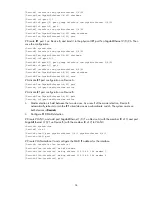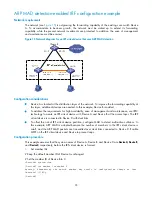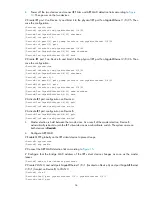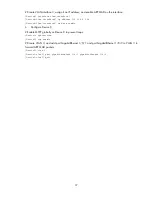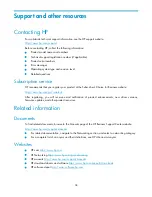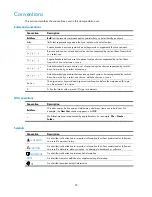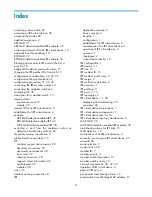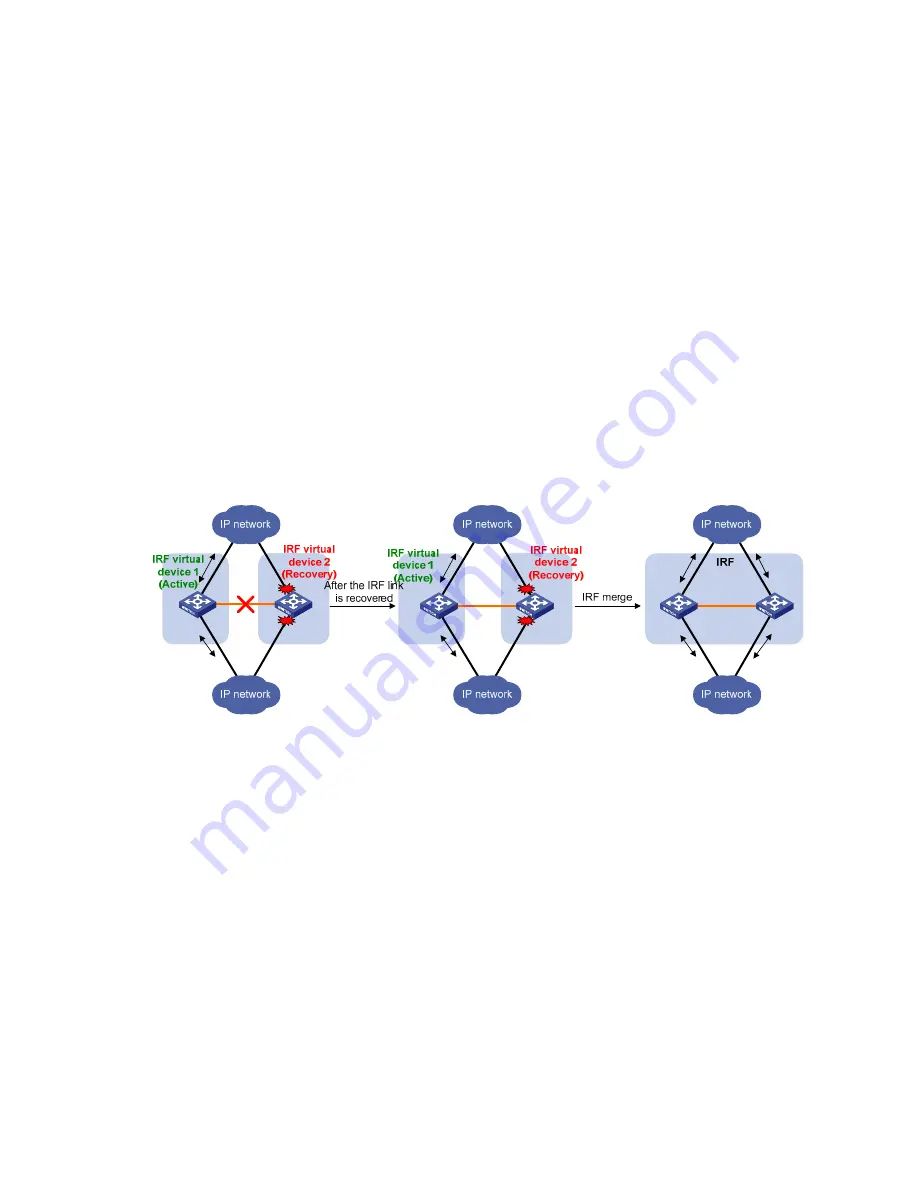
27
Physical IRF ports are not shut down when the IRF virtual device transits to recovery state.
If a certain VLAN interface is required to go on receiving and sending packets (for example, the VLAN
interface is used for remote login) after the IRF virtual device transits to recovery state, you need to
configure this VLAN interface and its corresponding Layer 2 Ethernet interface not to shut down when
the IRF virtual device transits to recovery state. However, if the VLAN interface is up in the IRF virtual
device in active state, IP collision occurs in your network.
Manually recovering an IRF virtual device
An IRF link failure causes an IRF virtual device to divide into two IRF virtual devices and multi-active
collision occurs. When the system detects the collision, it holds a master election between the two
collided IRF virtual devices. The IRF virtual device whose master’s member ID is smaller prevails and
operates normally. The state of the other IRF virtual device transits to the recovery state and temporarily
cannot forward data packets. In this case, recover the IRF virtual device by repairing the IRF link first.
The switch tries to automatically repair the failed IRF links. If the reparation fails, manually repair the
failed links.
When the link is recovered, the IRF virtual device in recovery state automatically reboots. Then the IRF
virtual devices both in active state and in recovery state automatically merge into one. Service ports that
were shut down and belonged to the IRF virtual device in recovery state automatically restore their
original physical state, and the whole IRF virtual device recovers, as shown in
Figure 11
.
Figure 11
Recover the IRF virtual device when IRF link failure occurs
If the IRF virtual device in active state fails due to exceptions (a member fails or link failure occurs, for
example) before the IRF link is recovered, as shown in
Figure 12
, enable IRF virtual device 2 (in recovery
state) at the CLI by executing the
mad restore
command. Then, the state of IRF virtual device 2 changes
from recovery to active without the need of rebooting and takes over IRF virtual device 1. Repair the IRF
links. When the IRF link failure is recovered, the two IRF virtual devices merge. More specifically, the
priorities of two masters from the two IRF virtual devices are compared, and the IRF virtual device whose
master’s priority is higher can operate normally. Members (only one in this example) of the IRF virtual
device whose master’s priority is lower reboot themselves, and the join the other IRF virtual device to
complete the IRF virtual device merge. After that, the original IRF virtual device recovers.

















